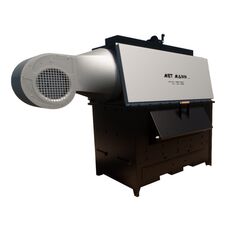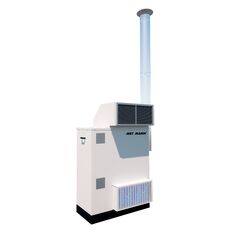New EP-100-C - Estufa de leña industrial industrial heater













If you decide to buy equipment at a low price, make sure that you communicate with the real seller. Find out as much information about the owner of the equipment as possible. One way of cheating is to represent yourself as a real company. In case of suspicion, inform us about this for additional control, through the feedback form.
Before you decide to make a purchase, carefully review several sales offers to understand the average cost of your chosen equipment. If the price of the offer you like is much lower than similar offers, think about it. A significant price difference may indicate hidden defects or an attempt by the seller to commit fraudulent acts.
Do not buy products which price is too different from the average price for similar equipment.
Do not give consent to dubious pledges and prepaid goods. In case of doubt, do not be afraid to clarify details, ask for additional photographs and documents for equipment, check the authenticity of documents, ask questions.
The most common type of fraud. Unfair sellers may request a certain amount of advance payment to “book” your right to purchase equipment. Thus, fraudsters can collect a large amount and disappear, no longer get in touch.
- Transfer of prepayment to the card
- Do not make an advance payment without paperwork confirming the process of transferring money, if during the communication the seller is in doubt.
- Transfer to the “Trustee” account
- Such a request should be alarming, most likely you are communicating with a fraudster.
- Transfer to a company account with a similar name
- Be careful, fraudsters may disguise themselves as well-known companies, making minor changes to the name. Do not transfer funds if the company name is in doubt.
- Substitution of own details in the invoice of a real company
- Before making a transfer, make sure that the specified details are correct, and whether they relate to the specified company.
Seller's contacts


 Spain
Spain 
































El equipo incorpora un amplio hogar de combustión donde se introduce la leña o residuos leñosos, una vez realizada la combustión, los gases entran en contacto con un intercambiador de calor donde se produce la transferencia de calor con el aire impulsado por un ventilador. El aire caliente es difundido en el local a climatizar obteniendo un sistema de calefacción muy rápido y eficiente.
CARACTERÍSTICAS PRINCIPALES
• Hogar de combustión con ladrillos refractarios
• Parrillas de combustión en acero inoxidable
• Cajón de cenizas de gran capacidad
• Puerta de acceso al hogar de combustión
• Panel lateral con cámara de aire para la convección del calor
• Regulador de tiro aplicado a la salida de los gases de combustión
• Ventilador centrífugo reversible a ambos lados
• Rejillas de protección para evitar el contacto con la hélice del motor
• Fabricación en dos cuerpos para facilitar la limpieza y mantenimiento
• Kit termostato para arrancar y para el ventilador en función de la temperatura detectada (opcional)
DATOS TÉCNICOS
• Potencia térmica nominal: 100 kW
• Rendimiento: 80%
• Ventilador de aire centrífugo.
• Caudal de aire: 3.400 m3/h
• Presión disponible: 100 Pa
• Potencia eléctrica: 0,55 kW
• Tensión eléctrica: 230V/I/50Hz
• Diámetro impulsión de aire: 530mm
• Boca de carga: 835 x 280 mm
• Diámetro chimenea: 200 mm
• Dimensiones generales (Ancho/Fondo/Alto): 1239 (con ventilador: 2027) x 862 x 1632 mm
• Peso: 800 kg
DIFUSIÓN DEL AIRE
Los equipos normalmente disipan el calor por la parte opuesta al ventilador, pero existe la posibilidad de aplicar una red de conductos o con:
• Curva a 90° para dirigir el aire por la parte frontal o posterior
• Conductos especiales (curvas, pantalón, tolvas, etc…)